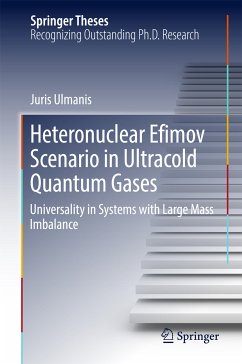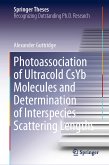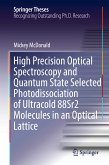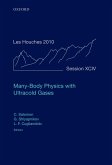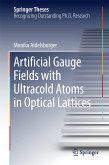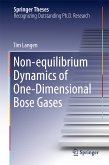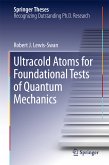This thesis represents a decisive breakthrough in our understanding of the physics of universal quantum-mechanical three-body systems.
The Efimov scenario is a prime example of how fundamental few-body physics features universally across seemingly disparate fields of modern quantum physics. Initially postulated for nuclear physics more than 40 years ago, the Efimov effect has now become a new research paradigm not only in ultracold atomic gases but also in molecular, biological and condensed matter systems. Despite a lot of effort since its first observations, the scaling behavior, which is a hallmark property and often referred to as the "holy grail" of Efimov physics, remained hidden until recently. In this work, the author demonstrates this behavior for the first time for a heteronuclear mixture of ultracold Li and Cs atoms, and pioneers the experimental understanding of microscopic, non-universal properties in such systems. Based on the application of Born-Oppenheimer approximation, well known from molecular physics textbooks, an exceptionally clear and intuitive picture of heteronuclear Efimov physics is revealed.
Dieser Download kann aus rechtlichen Gründen nur mit Rechnungsadresse in A, B, BG, CY, CZ, D, DK, EW, E, FIN, F, GR, HR, H, IRL, I, LT, L, LR, M, NL, PL, P, R, S, SLO, SK ausgeliefert werden.
Hinweis: Dieser Artikel kann nur an eine deutsche Lieferadresse ausgeliefert werden.

